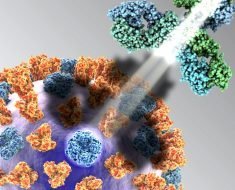Pyuria is the laboratory finding of the presence of leukocytes or white blood cells, commonly referred to as pus, in the urine. It is a common finding that may be indicative of various health conditions, but it is most commonly associated with a urinary tract infection (UTI) due to bacteria in the upper or lower urinary tract.
It is detected by urinalysis and may require further testing to confirm the cause and guide the optimal treatment decisions. Asymptomatic pyuria without infection may not require treatment, but pharmacological management is usually required for UTIs and some other causes.
Symptoms
There are no distinct symptoms of pyuria and reported symptoms are usually linked to an underlying health condition that is causing the pyuria.
Many patients will seek medical attention due to cloudy or foul smelling urine and, upon examination, the presence of pus in the urine is discovered. However, this is usually caused by a bacterial infection in the urinary tract that is also associated with other symptoms, such as frequent urination, painful urination and abdominal or lower back pain. In more severe infections, there may also be signs of fever, chills, nausea and vomiting.
Diagnosis
Pyuria is a laboratory finding that can help in the diagnosis of other conditions, such as urinary tract infection.
The presence of pus in the urine can be detected via urinalysis of a urine sample, which is taken mid-stream. It is then sent to a laboratory for microscopic examination and chemical analysis. Pyuria is considered to be when there are greater than 6 neutrophils per high power of unspun, mid-stream urine.
During the diagnostic process, it is important that other secretions do not contaminate the urine sample. This is particularly important for females because vaginal secretions contain bacteria that may confound the results of the analysis.
Further diagnostic testing may be required to determine the cause of pyuria. This may include intravenous pyelogram (IVP), computed tomography (CT) magnetic resonance imaging (MRI) or ultrasound imaging of the abdominal area.
Associated Conditions
As mentioned previously, by far the most prevalent cause of pyuria is a bacterial infection of the urinary tract. However, there are several health conditions that may be responsible for causing pyuria. These may include:
- Infections
- Kidney disease
- Papillary necrosis
- Diabetes
- Tuberculosis
- Renal stones
- Kawasaki disease
- Cancer
Treatment
The recommended treatment of pyuria is dependent on the underlying cause of the condition. If there is no associated infection and the patient is asymptomatic, there may not be a need for any treatment.
Several antibiotic medications may be indicated to eradicate bacteria in the urinary tract. These may include:
- Levofloxacin
- Ciprofloxacin
- Minocycline
- Ampicillin
- Amoxicillin/Clavulanate
- Erythromycin
- Doxycycline
- Norfloxacin
Epidemiology
Pyuria due to a urinary tract infection is common in people of all ages but is more prevalent in females than males. The overall prevalence of asymptomatic infection is estimated to be 3.5%. Risk factors for this include diabetes, UTI history and lower socioeconomic status. Pregnant women are also more likely to be affected, with 4-10% women found to have pyuria.
References
- http://www.nmihi.com/p/pyuria.htm
- http://www.advuro.com/wp-content/uploads/2015/05/pyuria.pdf
- http://www.mdguidelines.com/pyuria
- http://www.nebraskamed.com/app_files/pdf/careers/education-programs/asp/uti-asbu-guidance-final.pdf
Further Reading
- All Pyuria Content
Last Updated: Aug 23, 2018

Written by
Yolanda Smith
Yolanda graduated with a Bachelor of Pharmacy at the University of South Australia and has experience working in both Australia and Italy. She is passionate about how medicine, diet and lifestyle affect our health and enjoys helping people understand this. In her spare time she loves to explore the world and learn about new cultures and languages.
Source: Read Full Article





